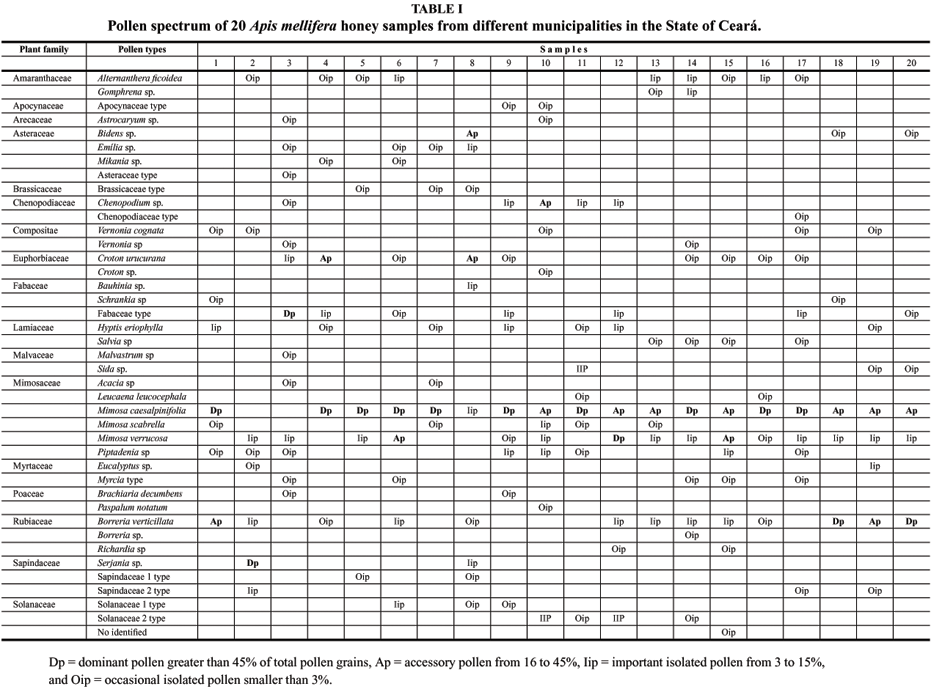Knowledge about the botanical source of honey is very important for the beekeeper while it indicates adequate and abundant supply sources of nectar and pollen for the bees, thus contributing toward improved yield. The present study means to identify the pollen types occurring in 58 samples of honey produced in two states of the northeastern region of Brazil, Piauí (38 samples) and Ceará (20 samples), and to verify the potential of the honey plants during the months of February to August. The samples were obtained directly from beekeepers in each state and analyzed at the Apiculture Laboratory of the Entomology Section of Escola Superior de Agricultura "Luiz de Queiroz", USP, Piracicaba, State of São Paulo, Brazil. The pollen analysis was performed using the acetolysis method. The samples were submitted to both a qualitative and a quantitative analysis. The dominant pollen in the State of Ceará is from Mimosa caesalpiniaefolia, M. verrucosa, Borreria verticillata, Serjania sp., and a Fabaceae pollen type, while in the State of Piauí it is from Piptadenia sp., M. caesalpiniaefolia, M. verrucosa, Croton urucurana and Tibouchina sp.
pollen type; honey; Apis mellifera; bee plant; Ceará; Piauí



